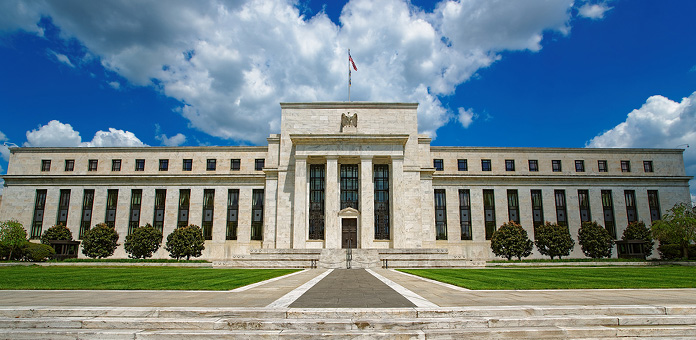
The Federal Open Market Committee, the agency responsible for the U.S. Federal Reserve’s monetary policy, did not announce plans for new interest rate increases during its July meeting. The government entity continues to use its bully pulpit to signal an improving economy, but this delay was just one of a number of recent signs that it will be a long journey back to market-driven “normal” interest rates.
In fact, even the most aggressive positioning of the Fed indicates it won’t hit a rate of 3 percent until after 2020. 1 Since this base rate affects virtually every other interest-related expense throughout the U.S. economy, such a status means more years of historically low interest rates for savers—and an ongoing form of massive taxation. 2
Expansionary Monetary Policy
The simple fact is that many recognized economists and financial experts are concerned about the Fed’s expansionary monetary policy. 3 They are quick to point out the unknowns behind this unprecedented manipulation of the world’s markets, and they question the consequences this decade-long experiment will ultimately have on the markets.
Elected representatives, businesses, and the public accept that the handful of decision-makers at the Fed and similar quasi-governmental bodies around the world are taking actions that will drastically shape their financial futures. A handful of unelected officials are engaging in a plan that no one has approved on a global basis nor can say for sure will have acceptable long-term results.
Fiat Currency Experiment
Likewise, few realize that the world has been engaged in a fiat currency experiment for more than 80 years. The combination of low interest rates and unfettered generation of paper and digital money by the central banks of the world has facilitated other historical firsts: massive levels of national debt and unsustainable, yet increasing annual deficit spending by virtually all major governments.
At the same time, cheap debt has changed the face of business, and many industries are now addicted to the availability of such capital and financing. In fact, an increasing number of individuals in the business world have now spent a third to a half of their lives dealing with artificially constrained costs of capital.
Market Correction
The simple fact is that markets always break out of artificial constraints, and no government action will ultimately prevent a needed market correction. It is worth noting that not only do many reputable economists and academics accept this as immutable economic reality, but they also note that efforts to prevent corrections often only make them much worse when they do come.
Many countries are now finding that addiction to cheap money is extremely difficult to break and comes at a steep price. A number of countries have propped up essential industries over the past decade, and companies in those sectors are now claiming they can’t survive any increases in the rate they are paying on the debt.
The reason that any increase would upset so many apple carts is that the companies have totally abandoned normal business prudence and capital structures to use cheap money to finance growth and acquisitions. Their business models don’t work at interest rates of even six percent—what was considered bargain basement cost before this artificial central bank-driven financial ecosystem.
Portfolio Protection
Savvy investors know they make money by increasing equity, enjoying the benefits of long-term appreciation of assets, and earning interest and dividends.
Two major considerations that determine the wisdom of investment decisions are inflation and taxation. The ultimate goal of investing is to add to the purchasing power of one’s portfolio. Increasing the number of paper dollars owned is a futile endeavor if the value of that currency continues to lose its purchasing power, especially relative to other assets.
In the same manner, it is quite frustrating to achieve gains and then see them eroded by taxation and other costs. Even at favorable capital gains taxes, the amount paid annually represents a significant sum when evaluated on a compound return basis over 20 or 30 years.
There is no question that current trends will keep interest rates low for at least two and perhaps another three-to-five years. Moreover, it is increasingly likely this monetary policy experiment will end, and not in a grand fashion.
Based on these factors, an increasing number of investors are ignoring the speculation over interest rate increases and focusing on assets that offer long-term protection and appreciation. That explains in part the reason the quantity of gold held for investment is at record levels, and why so many expect this trend to not only continue but even increase.
All of this is part of the reason so many analysts see a bullish future for gold prices.

